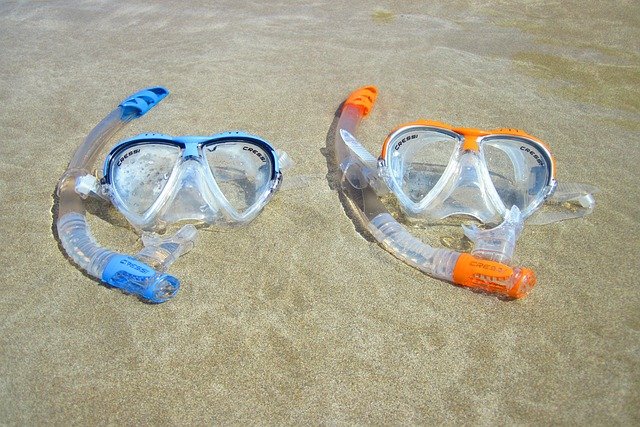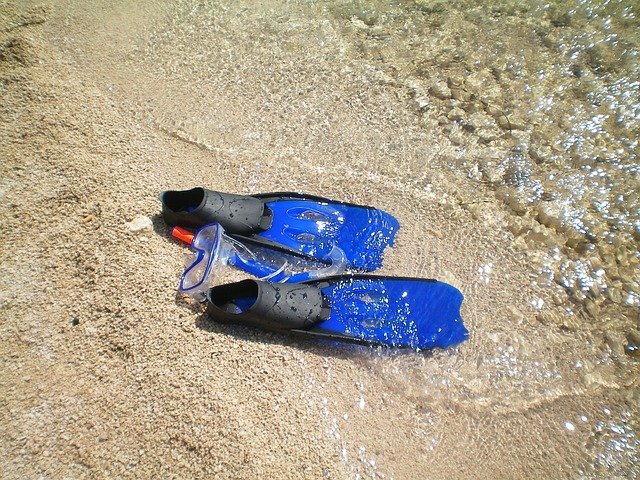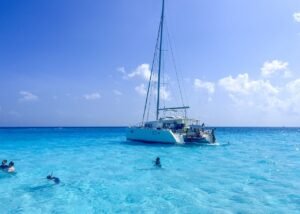
Incredible underwater beauty is calling you. And you are ready to go for adventure. But before you dive into the crystal-clear water, you need the right snorkeling gear. The right equipment is not just about comfort; it is about transforming your experience from ordinary to extraordinary. From masks that fit like a second skin to fins that propel you through the water with minimal effort, selecting the proper snorkeling gear is essential. Ready to dive in? Let’s explore the essential snorkeling gear that will set you up for an unforgettable adventure beneath the waves. In the detailed blog post, I will discuss on the best snorkeling gear, and how to chose them.
Why Snorkeling Gear Matters
One day my friend asked me what is the most important thing to consider for enjoyable snorkeling experience. Obviously, my answer was snorkeling gear. Perfect snorkeling gear is very crucial for enjoying snorkeling. A well-chosen mask, snorkel, and fins are more than mere accessories; they are the gateway to an immersive and unforgettable experience. Without the right snorkeling gear, your dream adventure could easily turn into a frustrating struggle with leaks, foggy lenses, or uncomfortable fins. That’s why you should consider well fitted and the best snorkeling gear for your next snorkeling adventure.
How the Right Snorkeling Gear Transforms Your Vacation
Imagine you are floating on the surface and the sun warming your back as you watch into the depths below. Every breath is easy and every movement effortless. The right snorkeling gear can make this a reality. A well-fitted snorkeling mask ensures that your view is clear that gives you freedom to soak in the underwater panorama without constant adjustments of your mask. A quality snorkel provides smooth and easy breathing that lets you focus entirely on the beauty around you. And with the right fins you can swim through the water with minimal effort. In essence, the right gear not only enhances your comfort but also amplifies the joy and wonder of snorkeling.
Snorkeling Mask: Your Window to the Underwater World
Snorkeling Mask: What to Look For
A snorkeling mask is your window to the underwater world. The clarity and field of vision it provides are critical to your enjoyment. When selecting a mask, you should look for one that offers a wide and clear view. High-quality silicone mask provides a secure seal around your face, preventing water from leaking in while remaining comfortable for extended periods. Additionally, tempered glass lenses are a must for durability and safety as they are less likely to shatter under pressure.
Finding the Perfect Fit: Avoiding Leaks and Discomfort
Well fitted mask is very important for snorkeling experience. A mask that doesn’t fit properly can cause constant leakage that can make your snorkeling journey annoying. To find the perfect fit, press the mask gently against your face without using the strap and inhale through your nose. If the mask stays in place without air seeping in, you have likely found a good match. The mask should feel snug but not tight, and there should be no pressure points. Comfort is key, as you will be wearing it for extended periods.
Lens Types: Clear, Tinted, or Prescription Options
The type of lens in your snorkeling mask can significantly affect your underwater experience. Clear lenses are ideal for general use that provides natural color rendition and bright visibility. Tinted lenses, on the other hand, can reduce glare and enhance contrast in bright conditions, making them perfect for tropical waters. For those who wear glasses, prescription lenses are a game-changer, allowing you to see clearly without the hassle of contacts or struggling with your vision underwater.

The Importance of Anti-Fog Coating for Clear Vision
In snorkeling adventure, nothing is more frustrating than having your view constantly obscured by fog. Anti-fog coatings on mask lenses can prevent this common issue, ensuring that your vision remains clear throughout your dive. If your mask doesn’t come with an anti-fog coating, you can apply anti-fog solutions or even use a simple trick like rubbing a small amount of baby shampoo on the inside of the lens and rinsing it lightly before you dive.
Choosing the Right Snorkel: Breathing Easy Underwater
Understanding Snorkel Types: Classic, Semi-Dry, and Dry Snorkels
Snorkels come in several varieties, each with its own set of advantages. Classic snorkels are simple tubes that is ideal for those who prefer a no-frills approach. However, they lack any mechanisms to prevent water from entering the tube. Semi-dry snorkels feature a splash guard at the top to minimize water entry that is perfect for choppy conditions. Dry snorkels, the most advanced type, have that completely seals the tube when submerged, preventing water from entering altogether. This feature is especially useful for beginners or those who prefer a more carefree snorkeling experience.
Mouthpiece Comfort: What to Consider for Long Snorkeling Sessions
The mouthpiece is often overlooked, but it is a critical component of your snorkel. Comfort is key here if you plan to spend extended periods in the water. A well-designed mouthpiece should fit comfortably in your mouth without causing jaw fatigue or irritation. Look for one made of soft silicone which molds to the shape of your mouth and offers a gentle yet secure bite. Some snorkels also offer replaceable mouthpieces allowing you to customize the fit or replace it if it wears out.
Purge Valves and Splash Guards: Features That Enhance Your Experience
Purge valves and splash guards are two features that can greatly enhance your snorkeling experience. A purge valve allows you to easily clear any water that does enter the tube by simply exhaling forcefully. This is a convenient feature that reduces the effort required to keep your snorkel clear. Splash guards help to deflect water away from the opening and minimizing the amount that enters the tube when waves or splashes hit you. Together, these features make snorkeling more enjoyable and less of a hassle.
Fins: Enhancing Your Movement in the Water
Full-Foot vs. Open-Heel Fins: Which is Right for You?
Choosing between full-foot and open-heel fins is a matter of personal preference and intended use. Full-foot fins are designed to be worn barefoot and provide a snug fit around your entire foot. They are generally lighter and more compact that makes them easy to pack and carry. Open-heel fins, on the other hand, are adjustable and typically worn with neoprene booties, offering better insulation and protection in colder waters. They also provide more power and are often preferred by divers who require more thrust and control.
Blade Length and Flexibility: Finding the Balance Between Power and Control
The blade of your fins plays a crucial role in your underwater propulsion. Longer, stiffer blades provide more power for quick move through the water with fewer kicks. However, they can be more tiring to use over long periods. Shorter, more flexible blades offer greater maneuverability and require less effort. It is ideal for snorkeling in calmer waters or for beginners. The key is finding a balance that suits your fitness level and the conditions in which you’ll be snorkeling.
Compact Travel Fins: Packing Light Without Sacrificing Performance
For travelers, compact fins are a must. These fins are shorter and lighter than traditional models, making them easier to pack without taking up too much space in your luggage. Despite their smaller size, many compact fins are designed to provide excellent performance, ensuring that you don’t have to compromise on your snorkeling experience. Look for travel fins that offer a good balance of flexibility and power, and consider folding or collapsible options for even more convenience.

Wetsuits and Rash Guards: Comfort and Protection
Do You Need a Wetsuit? Factors to Consider Based on Destination
Wetsuit is not necessary in all weather conditions. In tropical waters, a wetsuit might not be necessary, but in cooler environments, a wetsuit can make a significant difference in comfort. Wetsuits provide thermal insulation, helping to keep your body warm even in chilly waters. They also offer some protection against jellyfish stings, scrapes, and other potential hazards. If you’re planning to snorkel in colder waters or for extended periods, a wetsuit is a wise investment.
Rash Guards: Protecting Your Skin from Sun and Scrapes
Rash guards are a versatile piece of snorkeling gear, offering protection from the sun’s harmful rays as well as from scrapes and stings. Made from lightweight, quick-drying materials, rash guards are comfortable to wear and can be used in a variety of water conditions. They are especially useful in tropical locations where the sun is strong, helping to prevent sunburn while you enjoy the water. Some rash guards also offer UV protection, further enhancing their value for sun-sensitive snorkelers.
Snorkeling Vests: Safety Meets Comfort
Why a Snorkeling Vest is a Smart Choice for Beginners
A snorkeling vest is an excellent addition to your gear, especially if you’re new to the activity or not a confident swimmer. These vests provide buoyancy that helps you stay afloat effortlessly and reducing fatigue. This allows you to focus more on enjoying the underwater scenery rather than worrying about staying above water. Snorkeling vests are lightweight and can be inflated to your desired level of buoyancy, making them customizable to your comfort needs.
Inflatable vs. Foam Vests: Which Offers Better Buoyancy?
When choosing a snorkeling vest, you will come across two main types: inflatable and foam. Inflatable vests are lightweight and packable. It is easier to carry for travel. They can be adjusted for buoyancy by inflating or deflating them. Foam vests, on the other hand, provide constant buoyancy without the need for inflation. While they are bulkier, foam vests are extremely reliable and require no adjustments, making them a good option for those who prefer simplicity and ease of use.
Choosing the Right Vest for Your Snorkeling Adventure
Selecting the right snorkeling vest depends on your personal preferences and the conditions you’ll be snorkeling in. If you’re looking for something that’s easy to pack and adjust, an inflatable vest might be your best bet. However, if you prioritize consistent buoyancy and don’t mind a bit more bulk, a foam vest could be the better choice. Consider how much support you need and whether you value portability over simplicity when making your decision.
Underwater Cameras: Capturing the Magic

Bringing an underwater camera on your snorkeling adventure allows you to capture the breathtaking beauty of the marine world and relive your experience long after your vacation ends. From vibrant coral reefs to curious fish, there’s so much to see beneath the surface, and an underwater camera lets you document these moments in stunning detail. A good camera can elevate your snorkeling experience.
Snorkeling Accessories: The Little Things That Make a Big Difference
Defogging Solutions: Keeping Your Mask Clear
A fogged-up mask can quickly ruin a snorkeling adventure. Fortunately, there are several effective defogging solutions available to keep your mask clear. Commercial defogging sprays are widely used and easy to apply before you enter the water. Alternatively, you can use natural solutions like baby shampoo, which is gentle and effective. Simply apply a small amount to the inside of the mask, rinse lightly, and enjoy a fog-free experience.
Dive Bags: Keeping Your Gear Organized and Protected
A good dive bag is essential for keeping your snorkeling gear organized, protected, and easy to transport. Look for bags with separate compartments for different pieces of equipment, such as your mask, fins, and snorkel, as well as additional pockets for smaller accessories like defogging solution or sunscreen. Waterproof or water-resistant materials are a must to protect your gear from moisture and damage, especially when traveling.
Snorkeling Socks and Gloves: Extra Comfort and Protection
Snorkeling socks and gloves are often overlooked but can add significant comfort and protection to your snorkeling experience. Neoprene socks provide warmth and prevent blisters from fins, making them especially useful for longer snorkeling sessions. Gloves protect your hands from sharp objects like coral or rocks and can help keep them warm in colder waters. These accessories are lightweight and easy to pack, making them a practical addition to your gear.
Maintaining and Caring for Your Snorkeling Gear
Proper cleaning is essential for maintaining the longevity and performance of your snorkeling gear. After each use, rinse your mask, snorkel, and fins thoroughly with fresh water to remove salt, sand, and debris. For a deeper clean, use mild soap or specialized gear cleaner. Pay particular attention to the mask’s silicone skirt and the snorkel’s mouthpiece, as these areas can harbor bacteria if not cleaned properly. Allow your gear to air dry completely before storing it to prevent mold and mildew growth.
Destination-Specific Snorkeling Gear Tips
Tropical Snorkeling Gear
When snorkeling in tropical destinations, the water is usually warm, and visibility is excellent, so gear choices should reflect these conditions. A lightweight rash guard or thin wetsuit is often sufficient for protection against the sun and occasional jellyfish. Choose a mask with clear lenses to enjoy the vibrant colors of coral reefs and fish. Compact travel fins are ideal for packing light, and a dry snorkel can be beneficial for calm, clear waters where you’ll be floating at the surface for extended periods.
Cold Water Snorkeling: What Extra Gear You’ll Need
Cold water snorkeling presents unique challenges that require additional gear. A thicker wetsuit is essential to keep your body warm. Consider adding a hood, gloves, and thicker neoprene socks to protect your extremities from the cold. Open-heel fins worn with booties provide better insulation and prevent heat loss through your feet. A dry snorkel is recommended to avoid water entry in rougher, colder conditions, and a snorkeling vest can help conserve energy in chilly waters.
Top Budget-Friendly Snorkeling Gear That Doesn’t Skimp on Quality
If you’re on a budget, there are plenty of affordable snorkeling gear options that don’t sacrifice quality. Brands like Cressi and Seavenger offer reliable masks, snorkels, and fins at a fraction of the cost of high-end models. Look for sets that bundle these items together, often at a discounted rate. Budget-friendly gear often uses slightly less premium materials but still provides excellent performance for casual snorkelers. Just be sure to read reviews and choose products that are known for their durability and comfort.
Renting Gear vs. Buying: What’s Best for Your Vacation?
Deciding whether to rent or buy snorkeling gear depends on how often you plan to snorkel and your destination. If you’re an occasional snorkeler or traveling to a location where gear rental is affordable and convenient, renting can save you the hassle of packing and maintaining equipment. However, if you snorkel regularly or prefer the comfort and hygiene of your own gear, investing in a personal set is worth the cost. Owning your own gear also ensures that you’re always using equipment that fits you well and meets your preferences.
Snorkeling gear is very important to enjoy the snorkeling adventure. If you want to see the underwater beauty, you must have the best snorkeling gear.The right mask, fins, and snorkel will not only elevate your comfort but also maximize your enjoyment of the vibrant underwater world. By investing in quality snorkeling gear, you’re setting the stage for an adventure that’s both safe and awe-inspiring. Enjoy your next adventure, and stay safe.



